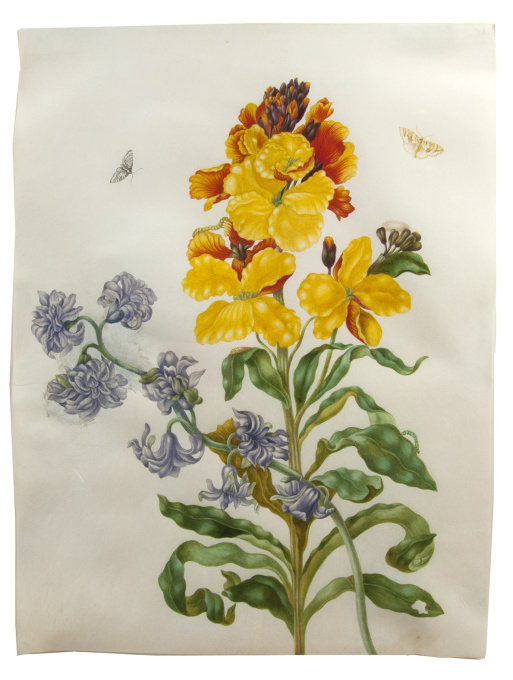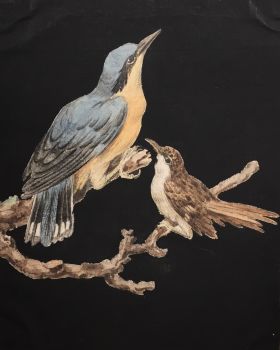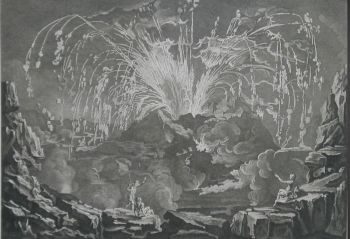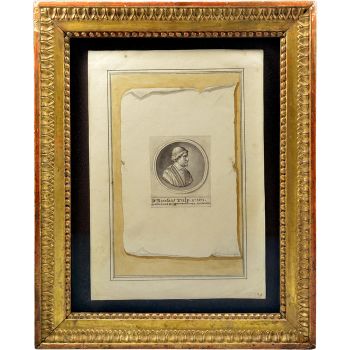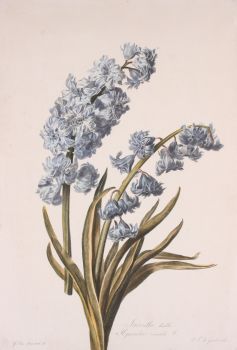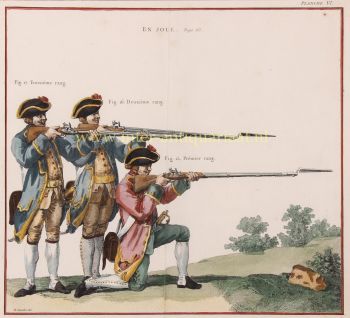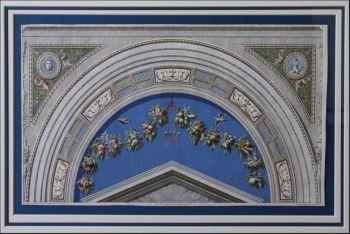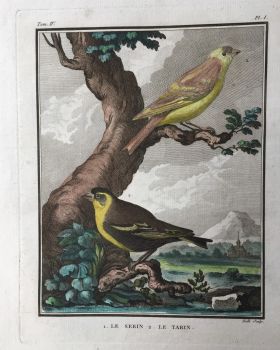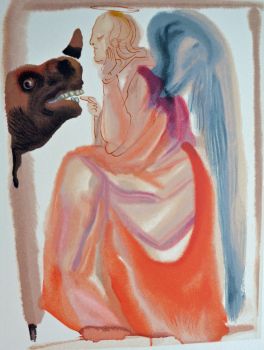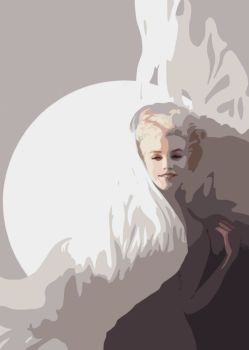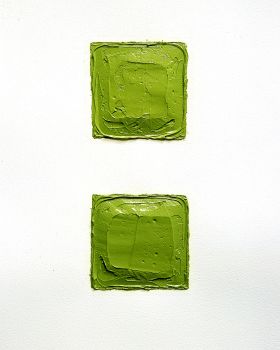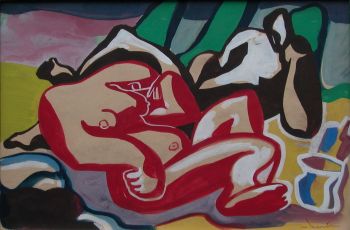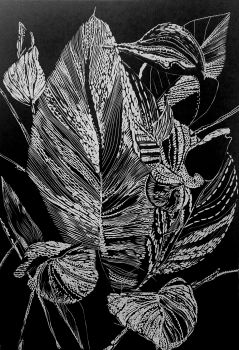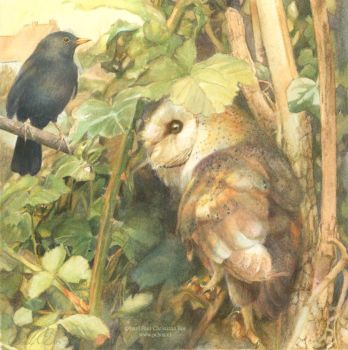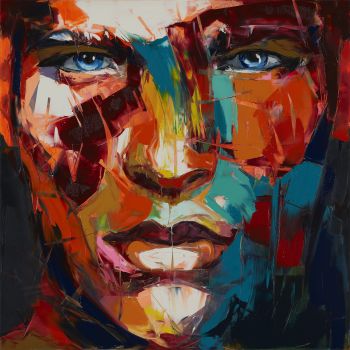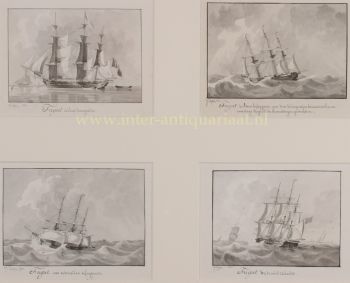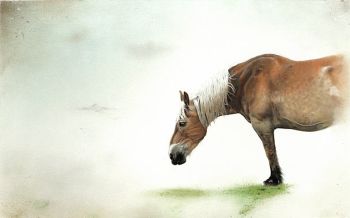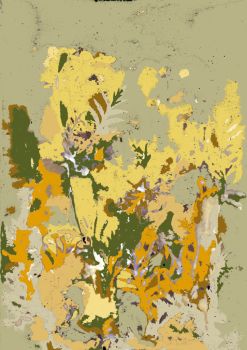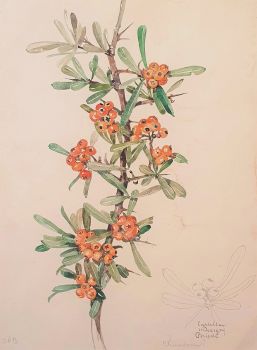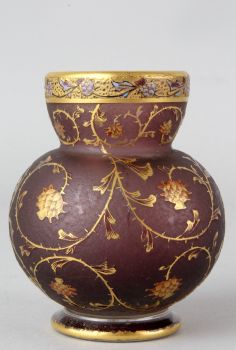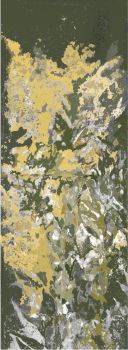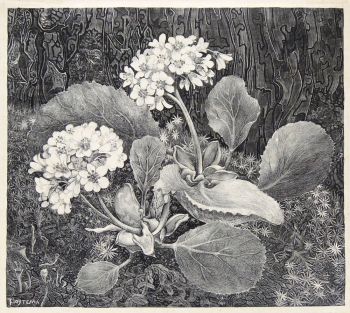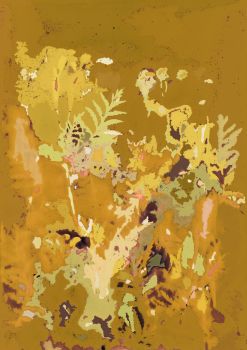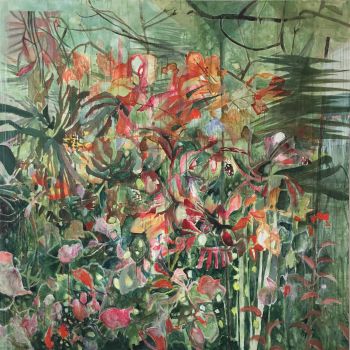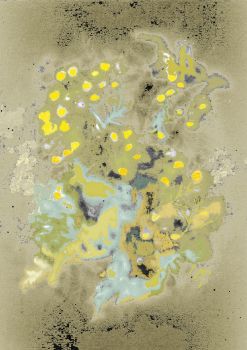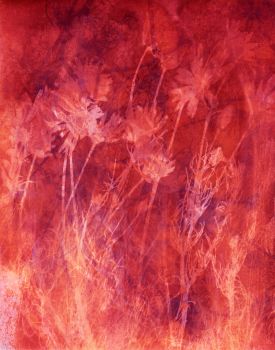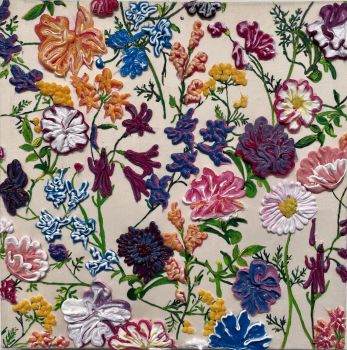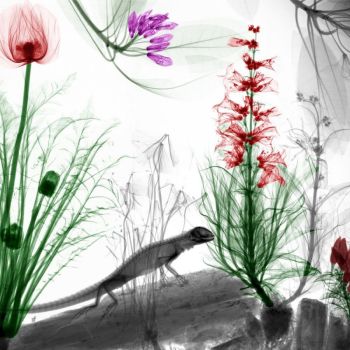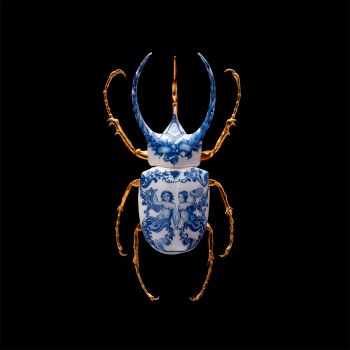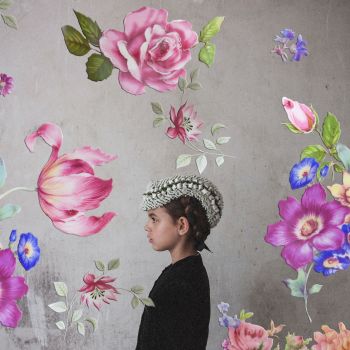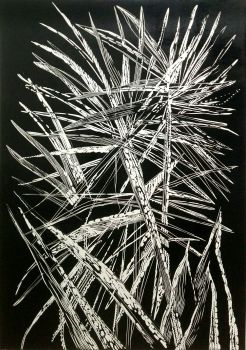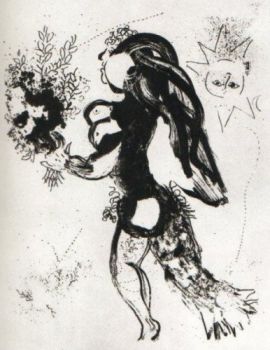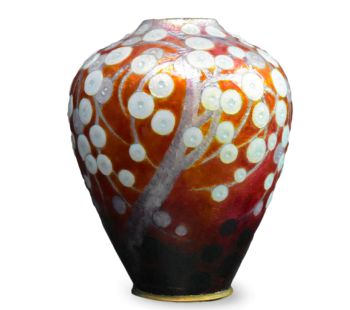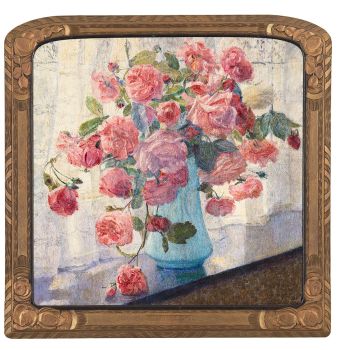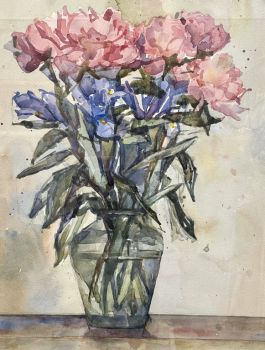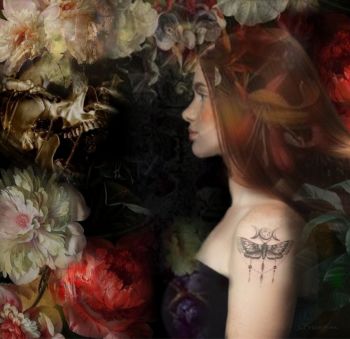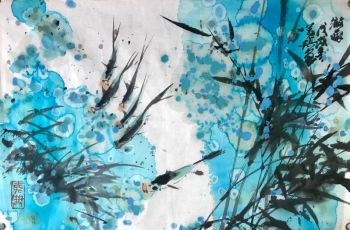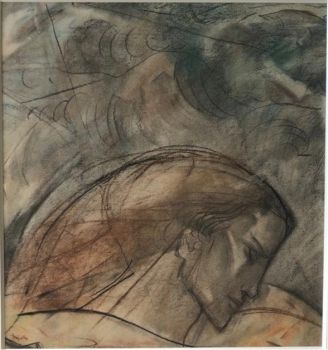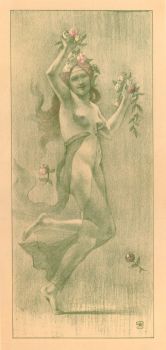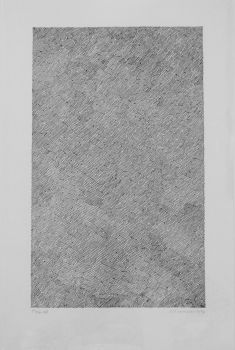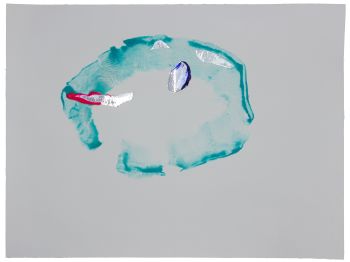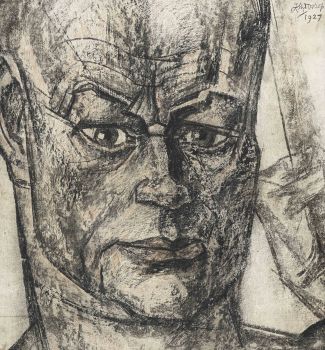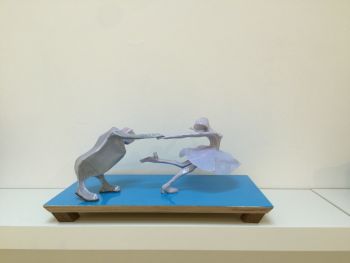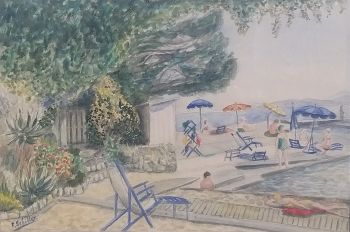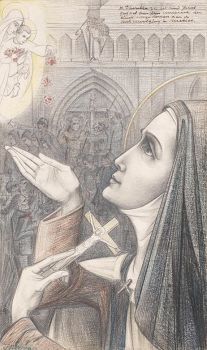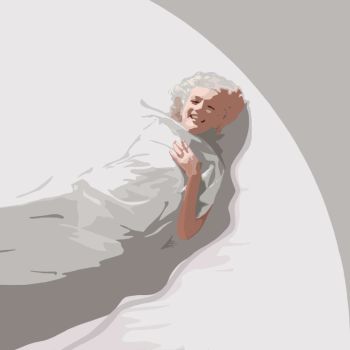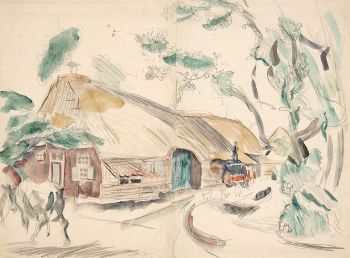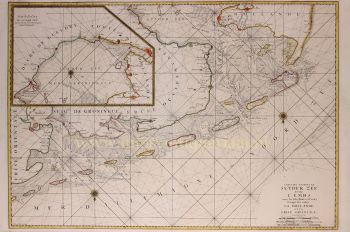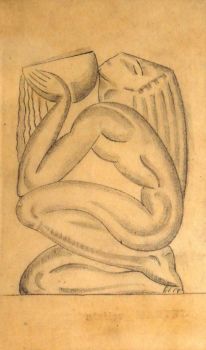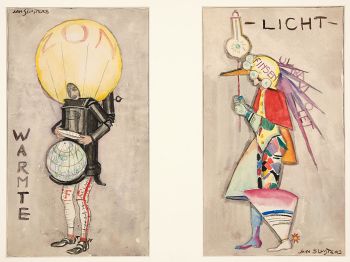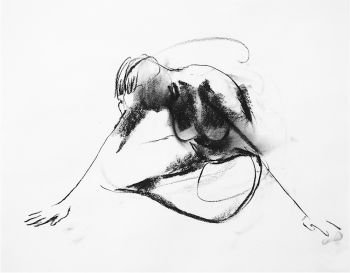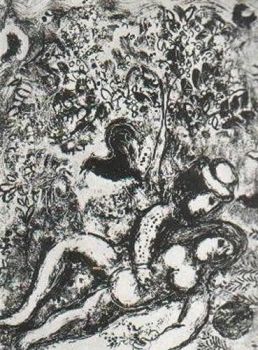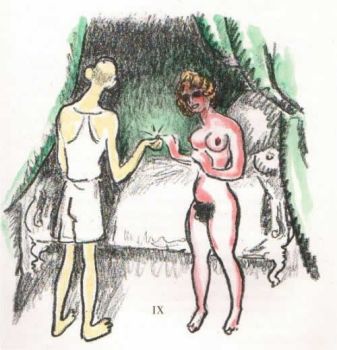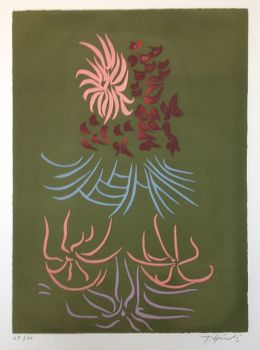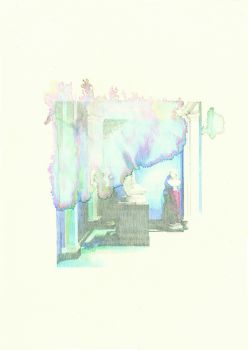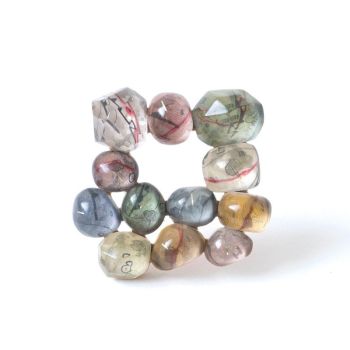Flower watercolour with moths, larvae and pupae, by the daughter of Maria Sibylla Merian 1700
Johanna Helena Herolt
CartaAcquerello
29 ⨯ 38 cm
Attualmente non disponibile tramite Gallerease
- A proposito di opere d'arte[Watercolour of a wallflower and a double hyacinth, with inchworm moths, larvae and pupae].
[Amsterdam, ca. 1700]. Watercolour drawing (38 x 29 cm) on extremely fine white parchment, said to be uterine lamb, showing a wallflower and a double hyacinth with two inchworm moths in the air (2 different species) and two inchworms and two pupae on the leaves and flowers. Framed.
Characteristic original watercolour botanical drawing by Johanna Helena Herolt (1668-post 1721), the eldest daughter of Maria Sibylla Merian and Johann Andreas Graff. It shows a wallflower (Cheiranthus cheiri) and double hyacinth (Hyacinthus orientalis) with two inchworm moths (Geometriae) in the air, two inchworms and two pupae. She probably drew it in Amsterdam around 1700. Though she still remains in the shadow of her mother, she was a fine flower and insect artist in her own right and there is growing appreciation of her work. Her watercolours, more baroque than her mother's and often with brighter colours, radiate vigour and vivacity: the flowers, painted with intensity in every detail, really come to life.
Reitsma, p. 135, notes that the prices for the flower watercolours increased with the number of insects, so the present watercolour must have been unusually expensive. Most of Herolt's work is numbered and the present watercolour is numbered "145"[?] on the back. The published catalogues rarely note the numbers, but we understand the highest number known is 164.
Characteristic watercolour in fine state of preservation, with certificate of authenticity from Dr. S. Segal, Amsterdam. Herolt herself may have revised the upper part of the hyacinth.
Reitsma, Maria Sibylla Merian & dochters, ill. 110 (p. 147; a nearly identical drawing of the same wallflower specimen with 1 butterfly); Wettengl, Maria Sibylla Merian 1647-1717, kunstenares en natuuronderzoekster, no. 120 (ill. 44 on p. 85; a similar watercolour including the same wallflower specimen, with no insects). - A proposito di opere artistaSecondo l'RKD era la figlia maggiore dei pittori Maria Sibylla Merian e Johann Andreas Graff, e da loro imparò a dipingere insieme a sua sorella Dorothea Maria Graff. Sebbene fosse nata a Francoforte, nel 1670 la famiglia si trasferì a Norimberga, dove è stata cresciuta. Nel 1681 sua madre tornò a Francoforte senza suo padre, per vivere con sua madre dopo la morte del patrigno Jacob Marrel. Sebbene Johann Graff si unì alla sua famiglia in seguito, nel 1686 Merian lasciò il marito e si trasferì con le sue due figlie e sua madre in una comunità religiosa di labadisti a Wieuwerd, in Frisia. Johann Graff fece vari tentativi di riconciliazione, ma alla fine tornò in Germania. Nel 1691 le quattro donne si trasferirono ad Amsterdam, dove allestirono uno studio di pittura di fiori e soggetti botanici, continuando il lavoro di Merian su "The Caterpillar Book". Johanna sposò il mercante Jacob Hendrik Herolt, anche lui ex labadista, il 28 giugno 1692. Ebbero due figli e Johanna iniziò a farsi carico delle proprie commissioni, lavorando per Agnes Block e l'Amsterdam Hortus come sua madre. Johanna si trasferì con il marito in Suriname nel 1711 dove probabilmente morì, poco dopo il 1723. Opere[modifica] Una serie numerata di 49 disegni firmati da Herolt su pergamena si trova nella collezione dell'Herzog Anton Ulrich Museum, a Brunswick.[2] Questa serie è stata probabilmente commissionata dalla botanica e collezionista mennonita Agnes Block. Altri disegni di Herolt sono al British Museum.[2]
Artwork details
Categoria
Soggetto
Materiale e Tecnica
Colore
Related artworks
Rene Rietmeyer
"Netherlands, The Hague, March 2002"2002
Prezzo su richiestaEuropean Cultural Centre Collection
1 - 4 / 24Samuel Dejong
Anatomia Blue Heritage, Atlas Beetle Closed,2020
Prezzo su richiestaVilla del Arte Galleries
Paulus Franciscus Kromjong
Fiori davanti ad Arearea Aka (gioia) di Gauguin'20th century
Prezzo su richiestaZebregs & Röell - Fine Art - Antiques
1 - 4 / 24- 1 - 4 / 24

